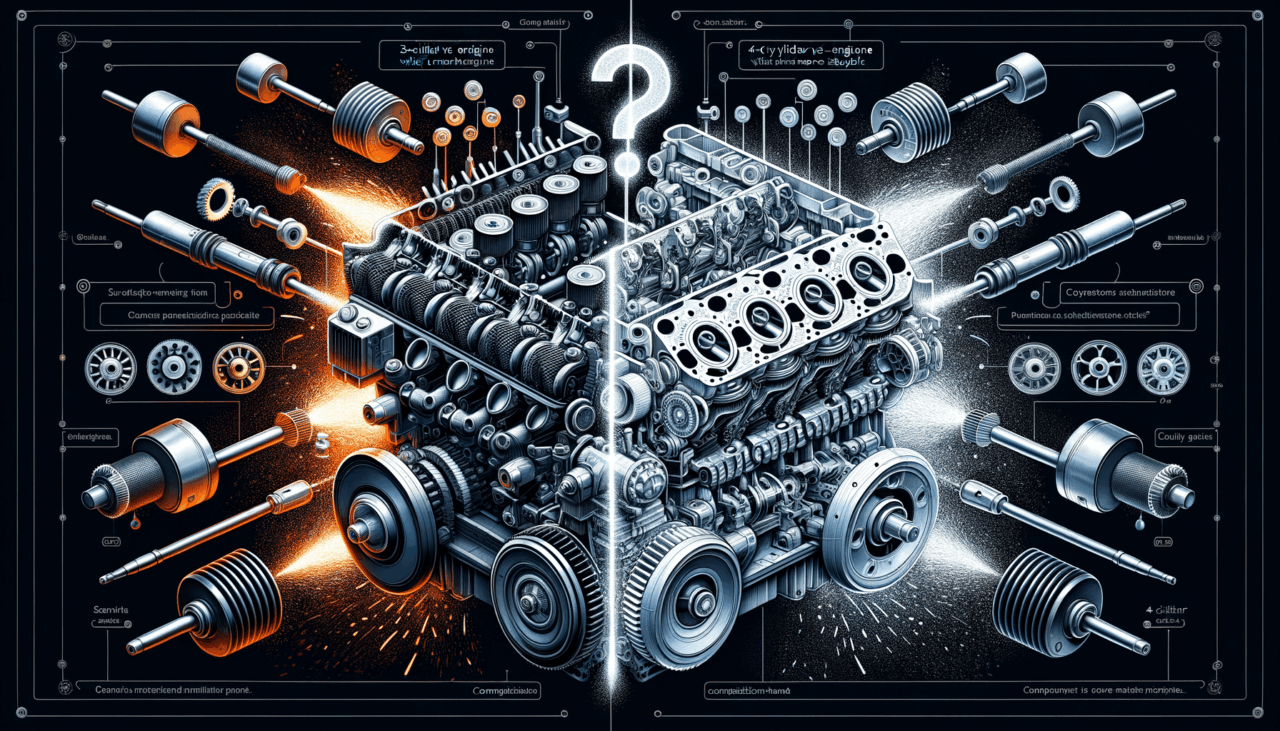3-Cylinder vs. 4-Cylinder Engine: What’s More Reliable?
When it comes to choosing an engine for your vehicle, it’s like picking between jollof rice and fried rice—each has its unique appeal and loyal fan base. The world of engines can be quite a maze, and today, we’ll be venturing into the heart of this labyrinth to compare 3-cylinder and 4-cylinder engines. Which one should you trust to carry you through the hustle and bustle of city life, or perhaps on that long journey to the village? Let’s dive in.
Understanding the Basics
Before we delve into the nitty-gritty, let’s first understand what we’re dealing with.
3-Cylinder Engines:
– Characteristics: These engines are like the underdogs of the automotive world. They’re compact, lightweight, and more often than not, turbocharged to make up for their smaller size. Think of them as the nimble okadas weaving through traffic with ease.
– Efficiency: Known for their fuel efficiency, 3-cylinder engines sip petrol as cautiously as an elder tasting new soup.
– Power: While they may lack the raw power of their larger counterparts, modern technology has given them enough bite to surprise you on the road.
4-Cylinder Engines:
– Characteristics: The 4-cylinder engine is like the seasoned public transport bus—reliable and widely used. It’s the go-to choice for many car manufacturers due to its balance of power and efficiency.
– Efficiency: They are efficient but slightly more thirsty than their 3-cylinder cousins.
– Power: More cylinders mean more power, akin to a well-fed athlete ready to sprint.
Comparative Table: 3-Cylinder vs. 4-Cylinder Engines
| Feature | 3-Cylinder Engine | 4-Cylinder Engine |
|---|---|---|
| Fuel Efficiency | Higher efficiency; ideal for city commutes | Moderate efficiency; good for both city and highway |
| Power | Adequate for city driving; may struggle on highways | More power; handles highways with ease |
| Noise and Vibration | Higher; can be like a market on a busy day | Lower; smoother and quieter operation |
| Cost | Generally cheaper; pocket-friendly like a thrift market | Slightly more expensive; but offers more value |
| Maintenance | Simpler; fewer parts mean less can go wrong | More complex; but parts are widely available |
| Space Requirements | Compact; frees up more room in the vehicle | Larger size; takes up more engine space |
Reliability: Which is More Reliable?
Ah, the million-naira question! Let’s break it down like a traditional tale told by the fire.
3-Cylinder Engines:
– Pros: They have fewer moving parts, which means there’s less that can go wrong. Like a diligent housekeeper, they require less maintenance and often cost less to repair.
– Cons: However, their simplicity can also be their Achilles’ heel. They might not handle the stress of constant high-speed driving as well as a 4-cylinder engine.
4-Cylinder Engines:
– Pros: The 4-cylinder engine is like that trusted family elder—you know what you’re getting. They are robust, versatile, and have stood the test of time.
– Cons: With more parts, there’s more that can potentially fail, and maintenance might pinch your wallet a bit more.
Conclusion
In the end, choosing between a 3-cylinder and a 4-cylinder engine is much like deciding between buying a goat or a cow. The goat (3-cylinder) is cheaper to feed and maintain but may not provide as much milk (power). The cow (4-cylinder) costs more, but it can plow the fields (roads) day in, day out.
If you’re primarily navigating city streets, the 3-cylinder engine could be your trusty keke napep. However, if your journeys often extend to expressways and long distances, the 4-cylinder engine might be the stalwart camel you need for those long hauls.
In the words of a wise Nigerian adage, “A person who sells eggs must walk carefully.” Choose the engine that best supports your lifestyle, and you’ll find reliability in either choice.

Comments (0)
There are no comments here yet, you can be the first!